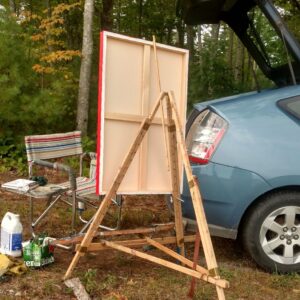
“I have been painting for two years now, primarily plein air and in acrylic,” a reader wrote. “While I’ve gotten by with a makeshift DIY easel, do you have any suggestion for a great beginner’s easel that can handle larger formats (up to 20×10)?”
I’ve written about how Google drove me toward inexpensive and fatally-flawed Meeden pochade boxes. Cheap boxes that don’t work are a false economy.
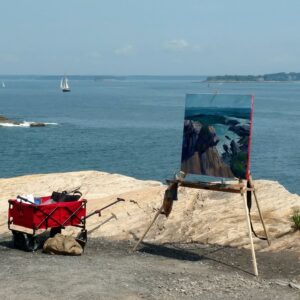
For years, I used Jerry’s knock-off of the Gloucester easel. Mine finally snapped in a high wind. The replacement was so warped that I can’t recommend it, unless you’re willing to do the work to remake the wooden parts. If you want this style easel, you need the Take-It Easel.
The Gloucester-style easel is invaluable for large work or windy days, but it’s too heavy for me to carry very far. Weight is the big reason so many artists use the Park-n-Paint approach to plein air. It’s easy, but it’s limiting.

Many people have been given a French box easel by loving friends or relatives. If you have one, by all means use it, but don’t voluntarily inflict one on yourself. They’re heavy and difficult to set up. Pochade boxes are lighter and nimbler.
Guerrilla Painter boxes are beautifully made, with rock-solid hardware and a heavy plywood shell, but they weigh a lot for their mixing area. I have a 12X16 Guerrilla box that is so tough I could drive over it with my truck without denting it. I never use it; it weighs too darn much.
For most fieldwork I use an Easy L box, which I have in two sizes. I’ve used them for several years, and the hardware is as tight as it was when they were new.
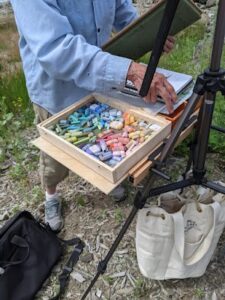
I also have the Leder easel, which at $159 (not including the tripod) is reasonably priced for a solid, stable, painting system. It can hold a canvas up to 24″ tall, which is large enough for most plein air work. You must buy your own tripod and paint box, but that has some advantages. You’re not hauling around a heavy wooden box, because you can pair it with a Masterson Sta-Wet palette box, which is far lighter . It’s also a great system for pastels, because it allows you to use your existing pastel box. In fact, you can flip between media quickly. (Ed reminds me that if you use the code Carol10, you’ll get a 10% discount.)
For watercolors, I love the Mabef M-27 field easel. It can hold a very large board and the angle adjusts very quickly. It’s usable for oils and acrylics, but balancing a palette on its arms is sometimes an exercise in frustration. I’m on my second one; the first one died after decades of abuse.

The New Wave u.go pochade is a simple, elegant design, although it’s really only suitable for smaller work. Its mixing area is very shallow; that’s a problem if you use lots of paint. However, the palette does lift out so you can freeze it, and it’s lightweight.
Strada makes the only aluminum pochade boxes that I know of. That’s a pity, because aluminum is less prone to moisture damage than wood. It doesn’t result in much weight savings, however.
En Plein Air Pro is well known for their watercolor system, which is lightweight and durable. Their newer oil-and-acrylic easel is equally nice. It can take a canvas up to 22″ high. I have had one of their tripod trays for years.
The Meeden watercolor field easel is a lightweight easel at a very low price. The tripod has a narrower stance than a photo tripod, but it does fold down into a backpackable kit. I don’t think it would stand up to long-term regular use, but it’s sufficient for the occasional painter. The drawing board can hold a sheet up to 12″ high.
Rebecca Bowes won Best in Show in the 10X10 show at the Red Barn Gallery in Port Clyde. Although I’m a member of the gallery, I had nothing to do with the jurying.
Like many of my students, she’s loath to admit just how accomplished she is. Next time I tell one of you, “That’s really good,” I hope you recognize that I’m not just blowing hot air.
Reserve your spot now for a workshop in 2025:
- Advanced Plein Air Painting, Rockport, ME, July 7-11, 2025.
- Sea and Sky at Acadia National Park, August 3-8, 2025.
- Find Your Authentic Voice in Plein Air, Berkshires, MA, August 11-15, 2025.
- Immersive In-Person Fall Workshop, Rockport, ME, October 6-10, 2025.
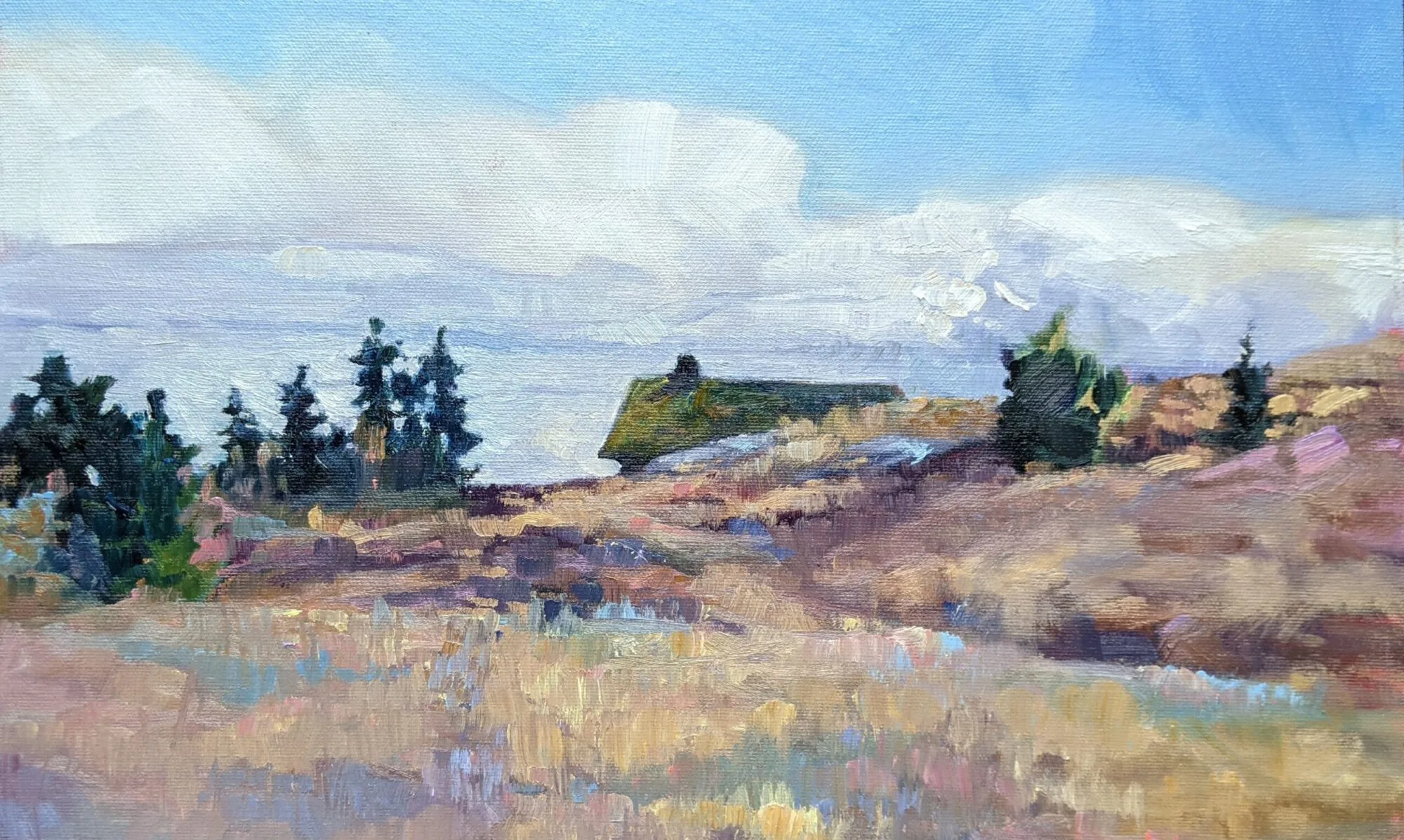
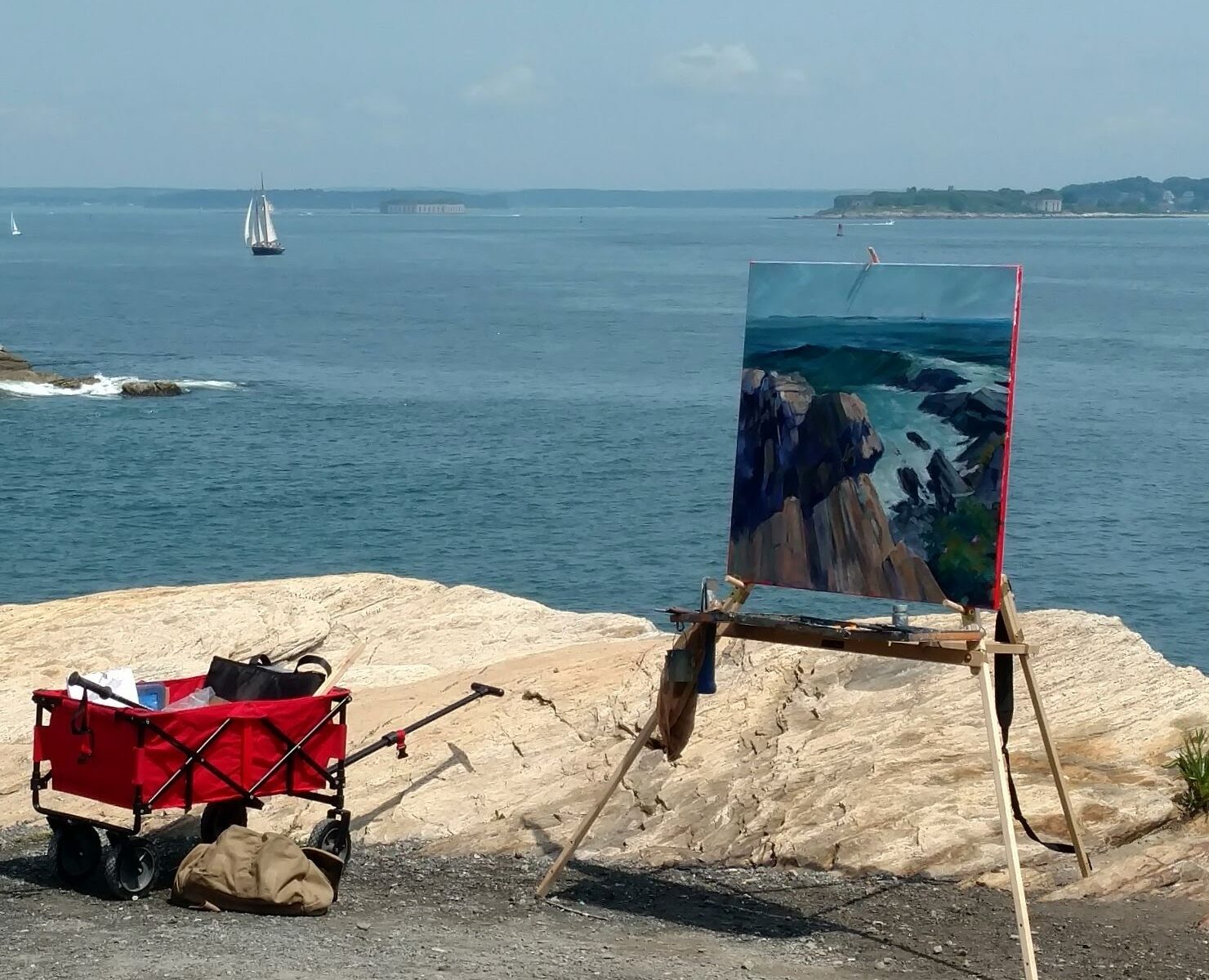
This is so true! It too me years and lots of money to find a system that works for me. Pastellists are often told to use boxes that sit on tripods and have an extended attachment to hold a panel/paper. In reality that just makes a perfect sail for a medium that is very sensitive to falling. This is a great topic!
I use the Coulter system for painting plein air. It’s THEE BEST for oils!!!!
It’s a mast system like the Leder easel, but I don’t know how much it costs because I can’t figure out where it’s sold. My friend Bobbi has one and likes it very much.
I recommend the Prolific Painter easels: Daytripper (larger) and Fly on the Wall (smaller). They are super super light and pretty sturdy at the same time.
I recommend the Alla Prima Pochade!
I want to add another vote for the Coulter Easel. Being able to adjust the distance between the panel and the mixing area is very useful. You can adjust the panel for your eye level and the mixing area to an appropriate hand level. Also, the mixing area if much better supported on the legs of your tripod than on the head of a tripod. Take a look at artboxandpanel.com